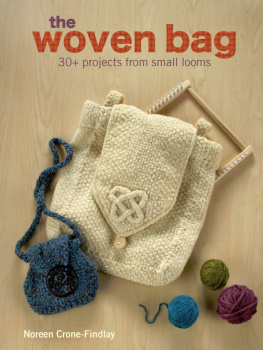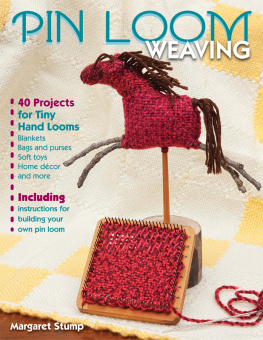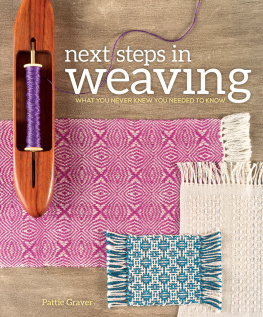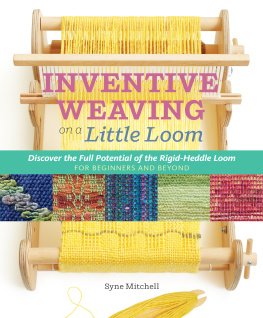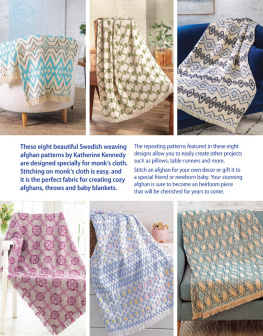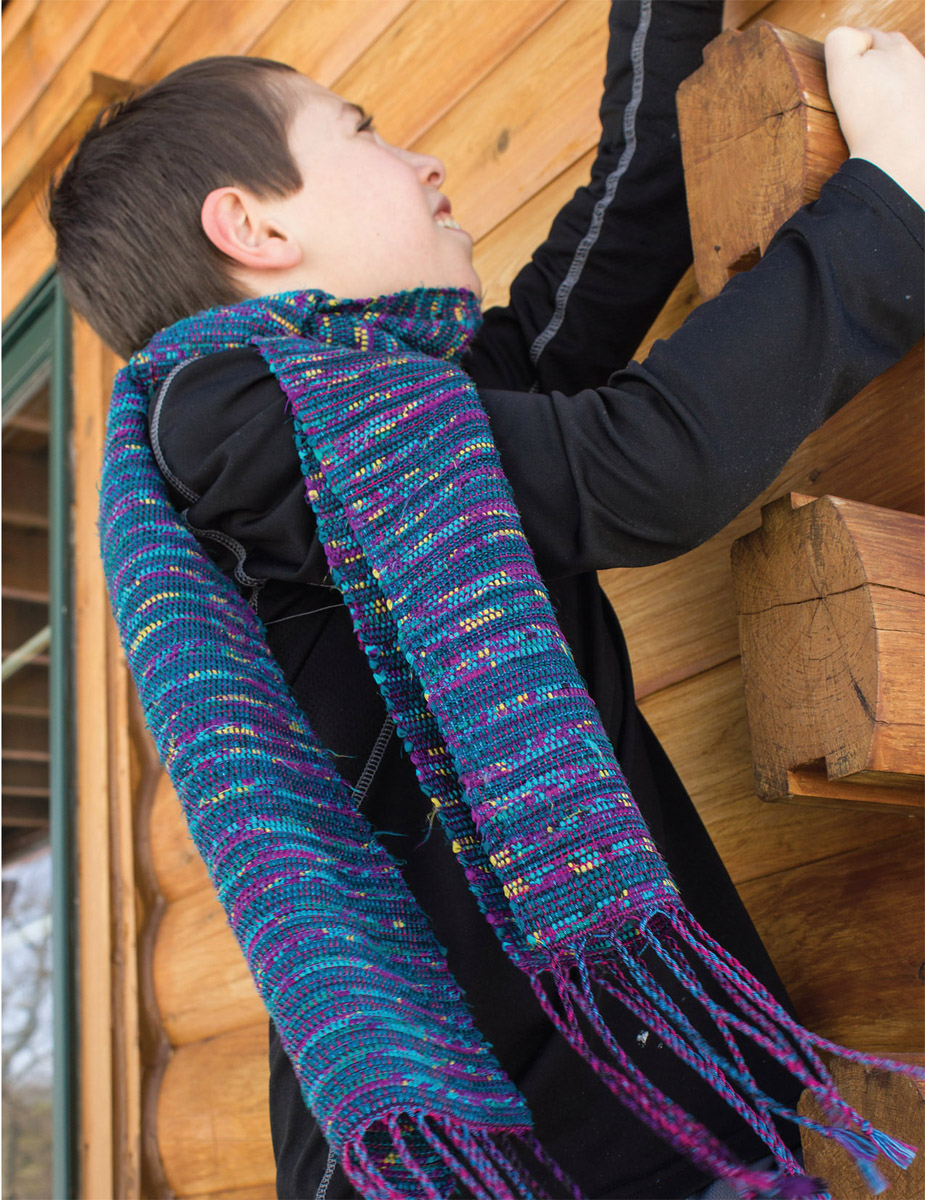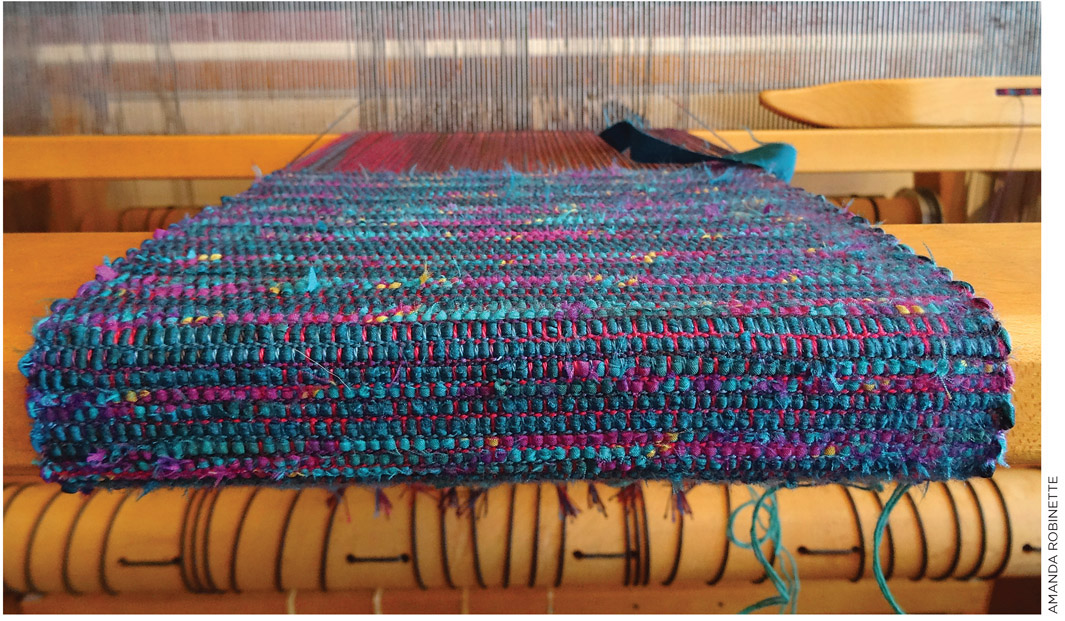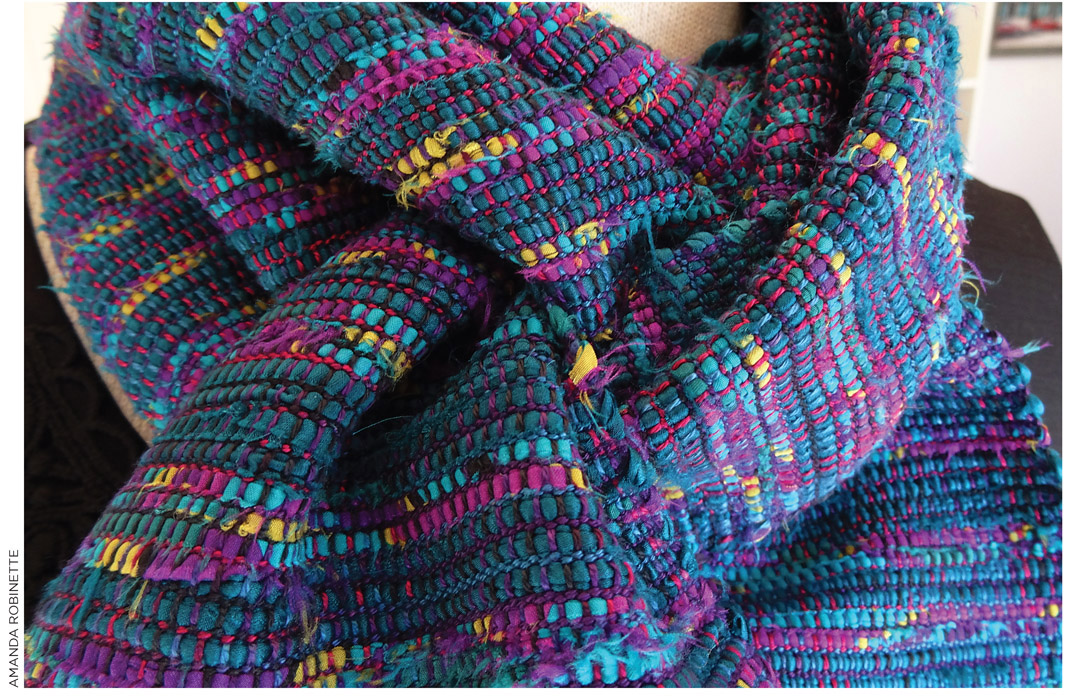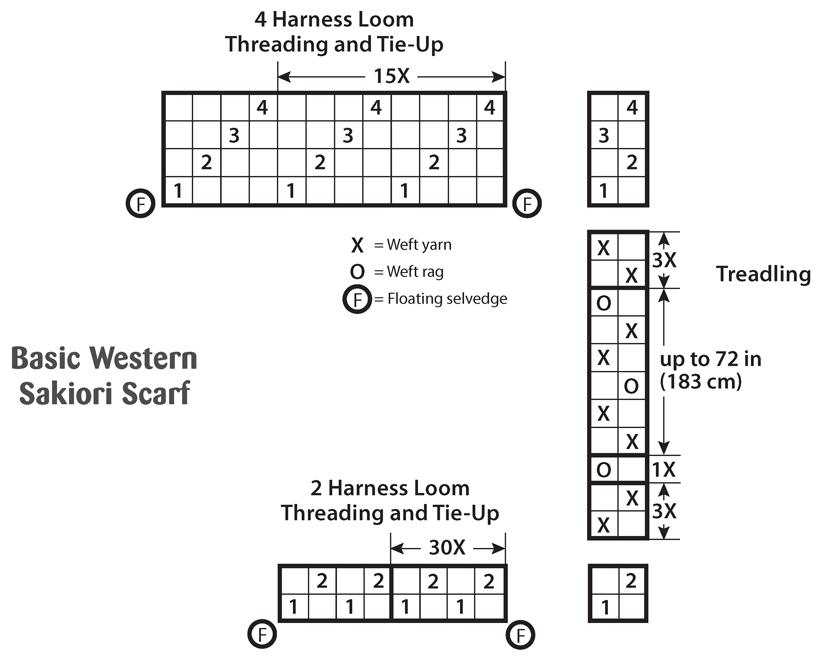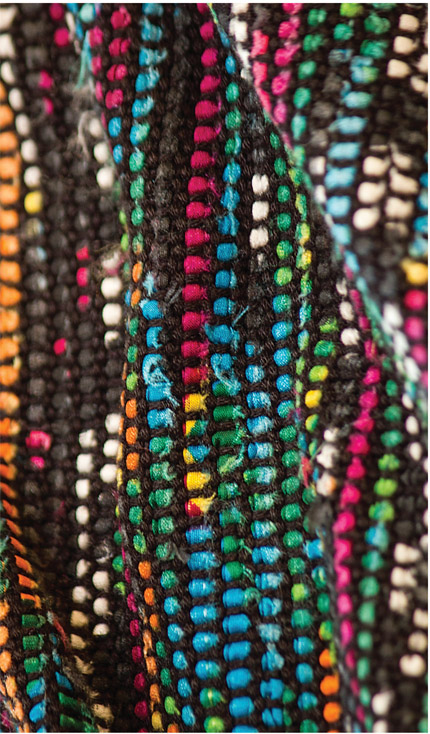ACKNOWLEDGMENTS
I have relied heavily on the exhibit catalog Riches from Rags: Saki-Ori & Other Recycling Traditions in Japanese Rural Clothing (Shin-Ichiro Yoshida and Dai Williams, San Francisco Craft & Folk Art Museum, 1994), regretfully out of print and difficult to come by. While there are other sources that mention sakiori, none has gathered as much information together in one place, in English.
I also wish to thank Stephen Szczepanek of Sri Gallery (Brooklyn, NY) for sharing his extensive knowledge and allowing me access to his collection of antique rural Japanese textiles for research and study. Seeing and handling these garments and other textiles has allowed me a much deeper understanding of sakiori than I would otherwise have had.
I would not have made this book, indeed, I would not be a weaver, if not for my Aunt Luann, to whom I am eternally grateful. She is the reason I took my first weaving class, and she gave me my first loom to get me started. Aunt Luann, you are a part of everything I weave and everything I write about weaving.
Special thanks must also be given to my teacher and mentor, Tom Knisely, who taught me beginning weaving many years ago. When I first shared my sakiori weaving and research with Tom, he offered me the interest, encouragement, and support I needed to take my work to the next level. Also, my thanks go to Roderick Owen, my braiding teacher, who has taught me so much and helped me to share my work with others.
This book would not be complete without the beautiful photographs of Kathy Eckhaus. A weaver and rug-hooker herself, she has a deep understanding of what weavers want to see in a textile photograph. Her support and encouragement have been as important as her photographs! Thanks, Kathy.
And, last but not least, I want to thank my family: my husband, Chris, who always believed I could do it; my children, Sabrina and Colin, who put up with a lot of absences during the making of this book; my parents, Mary Ellen and John Lenz, who supported me in every way they could, from providing office space to sewing (thanks, Mom!); and my parents-in-law, Kim and Billie Kaye Robinette, who drove hundreds of miles to deliver my first big loom many years ago.
Beginning with the Basics SCARVES AND SAMPLING
M any weavers, like knitters, make a lot of scarves when they are learning their craft. Scarves are narrow, dont take a lot of materials, and provide a long length on which to learn a new technique or sample with specific fiber choices. For sakiori, they also serve as an excellent example of how much drape can be achieved in rag weaving when we push the boundaries of the expected.
Basic Western Sakiori Scarf
T his is a beginners project that I use for teaching sakiori. It is a good way to get started and produces something students can take home to wear and impress their friends and family!
Silk is an excellent material for a rag scarf. When mixed with a warp of bamboo, tencel, or other rayon-type cellulose warps, it creates a supple, flowing material that wraps elegantly around the neck. Silk is warm and insulating without being fuzzy or rustic-looking. You could use other types of rag in your sakiori scarf, but with the beautiful colors and patterns of silk available, why would you?
This scarf is woven traditionally, with one pick of fine-cut rags alternating with two picks of the warp yarn. The rag came from two different ladies blouses, one dark teal and one with purple, yellow, and green stripes. The teal shirt was a heavy silk satin while the striped shirt was a thin plain weave silk. To compensate for the difference in weight, I cut the heavier silk a little thinner, around in (.9 cm). I alternated strips from each shirt to make an irregularly striped scarf and used the same variegated tencel in both warp and weft.
Materials
Warp: 8/2 tencel (3,360 yd/lb), Valley Yarns, Jewel Combo, 378 yd (345 m)
Weft yarn: Same as warp yarn, 212 yd (194 m)
Weft rags: Lightweight silk from two womens blouses, cut into -in (1.3-cm) or -in (.9-cm) strips (see above) (approximately 106 yd [97 m] of strips)
Warping and Weaving
Sett: 16 EPI (2 ends per dent in an 8-dent reed)
Weave structure: Plain weave
Width in reed: 7.75 in (19.7 cm)
Wind a 3-yd (2.75-m) warp of 124 ends and warp your loom by your desired method. Set up the loom for plain weave. After allowing at least 8 in (20 cm) of warp yarn for fringe, weave a header of at least an inch with waste yarn to spread the warp and provide an anchor for adding floating selvedges and a place to secure a temple. If desired, begin with leaving a 24-in (61-cm) weft yarn tail for hemstitching.
Under high tension, weave in plain weave, beginning with six picks of weft yarn only and then alternating one pick of weft rag with two picks of weft yarn. Weave for 70 in (178 cm) or to the desired length, finishing with six picks of weft yarn, and hemstitching, if desired. Secure with 1 in (2.5 cm) of waste yarn, and cut from loom, allowing at least 8 in (20 cm) for fringe.
Finishing
Finished dimensions: 6 in (17 cm) 62 in (157.5 cm), excluding fringe
Finish fringe as desired. Twisting or braiding is recommended to keep the fine yarns from tangling and fraying in washing and wearing the scarf.
Follow wet-finishing instructions for tencel warp/silk rag on page 27. Machine-dry with a large towel on low or no heat, checking every 20 minutes, until dry. Using an iron set on low to medium, hard press with steam, using iron to square up corners and straighten ends.
Care
Hand wash in cold water with mild detergent or shampoo. Rinse well and spin water out in washing machine set on spin or in a salad spinner. Dry and press as for Finishing.
Bright Bamboo Scarf
B amboo is another favorite warp yarn. Like tencel, it results in a fabric with superb drape. It is available in many colors and can also be purchased undyed to make your own unique colorway.
I like to use a black warp for very colorful rags to frame and set off the colors. These rags came from one of the great thrift shop mysteries that I regularly encounterthe silk shorts-set. It is sister to another great mystery, the silk tracksuit. They often come in appalling colors and prints and usually show signs of not having been worn very often. Over the years I have pondered these items, and I still do not understand them. Thin silk shorts and pants seem like a bad idea altogether, and a matching loud print on the top and the bottom overwhelms any figure. For such a casual or sporty outfit to be made of silk also confuses the mind. Is the tracksuit intended for something like a spa day, as something to change into for lunch or drinks in the lounge between treatments? Perhaps the shorts-set is sold under that strange category, cruise-wear, suited for that and little else?


